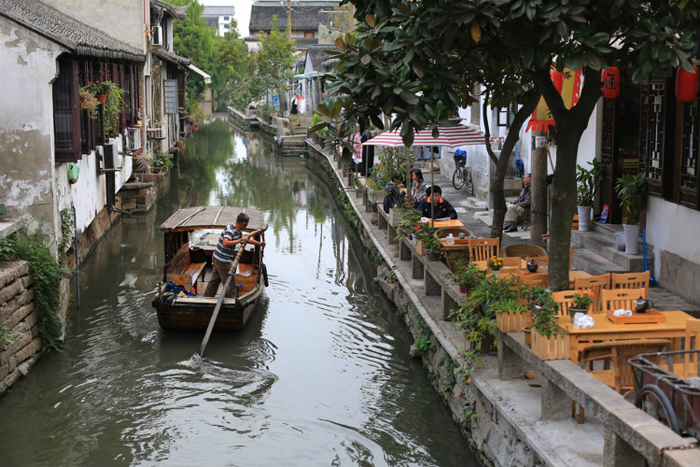A Day at PingJiang Road in Suzhou
- Xiqiao Zhang

- Mar 24, 2021
- 3 min read
March 2021
Made by Xiqiao Zhang & Casper Yang
Let’s get started from one of Suzhou's famous historical districts, Pingjiang Road.
Pingjiang Road, historically known as Shiquan Li, is a historic street in Gusu District, northeastern Suzhou, China. It is a well-preserved area and is part of the so-called Old Town Suzhou.
The main street is located along Pingjiang River and is around 16 hundred meters. It is close to the Humble Administrator's Garden and Suzhou Museum. The city of Suzhou was known as Pingjiang during the Southern Song Dynasty. As a major path of eastern Suzhou back then, the street carries on the former name of the city.

It was featured in the map Pingjiang Tu, produced in the year 1229. There are 51 smaller alleys intersecting the street. There are also about 3 kilometres of canals within the historic district.
Walking along the Pingjiang Road you will see the Ice Pop Bridge. Ice Pop Bridge is a covered bridge which was painted on Ping Jiang Tu during Song Dynasty. The classic text The Twenty-four Filial Exemplars say a son called Zhang invented ice pop to protect his mother from famines. People were moved by this story, and named the bridge Ice Pop to memorize him.
Pingtan, also known as Suzhou pingtan, is a regional variety of song and a musical performance art form popular in Jiangsu. It is a combination of the Chinese narrative musical traditions pinghua and tanci. It dates back to the Song dynasty and is influenced by Wuyue culture.
Created by the work of the Pingtan artists, this art form enjoys great popularity in Suzhou. The long history has also laid a solid foundation for its development. Its contents are rich, though the form is simple. "story telling, joke cracking, music playing and aria singing" are the performing techniques, while "reasoning, tastes, unexpectedness, interest and minuteness" are the artistic features. Although it originated in Suzhou, Pingtan flourished in Shanghai with the development of commerce and culture at the turn of the 19th century. After that, Pingtan became a new form of performance by innovating and carrying on the tradition.

The Suzhou Kunqu Museum is a theatre museum in Suzhou. It is located in a Ming dynasty theatre of wood and has display halls with old musical instruments, hand-copied books, lyrics and scores, masks and costumes. It also has other paraphernalia (instrument) including a life size orchestra and photographs of performers. The museum also covers kunqu's 500-year-old history. The museum is often used for performances today and the teahouse stages daily shows. Kunqu has distinctive features in its musical performance. It is so mild, elegant, and melodious. The Lyrics usually focuses on a story of romantic love. Kunqu singing emphasizes control of the voice and changes in rhythms. Singers must also use their skills to express the disposition of various characters, an aspect that adds complexity to the form. The musical ensemble is mainly composed of wind, stringed, and percussion instruments.
Sugar painting is a form of traditional Chinese folk art using hot, liquid sugar to create two dimensional objects on a marble or metal surface. Melted sugar is carried by a small ladle made by bronze or copper. After it cools, it will be stuck to a bamboo stick and removed using a spatula. Three dimensional objects can be created by laying solidified sugar.
On Pingjiang Road, you can not only visit it on foot, but you can also choose to take a boat tour of the scenery. At the end of the video, let us take a boat back to the starting point to end today’s journey






Comments